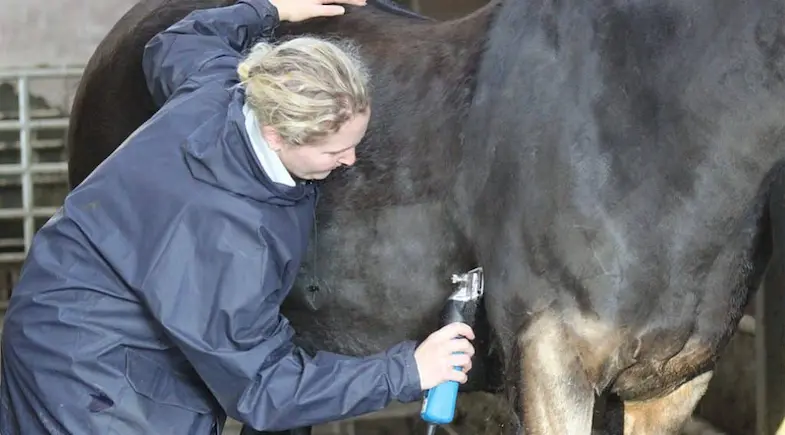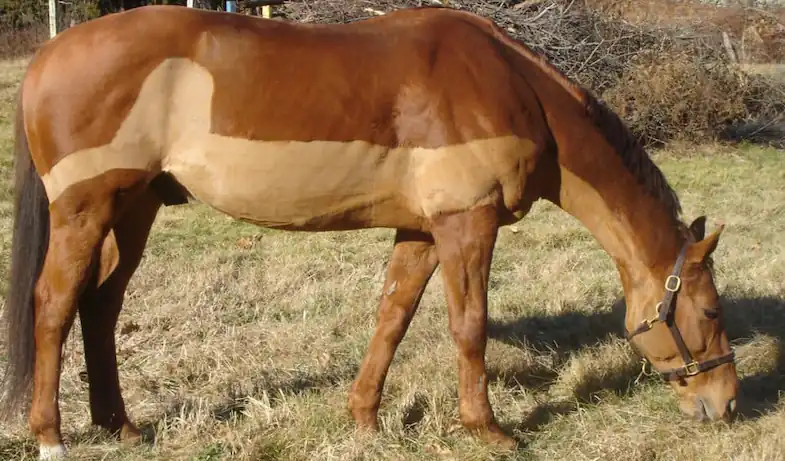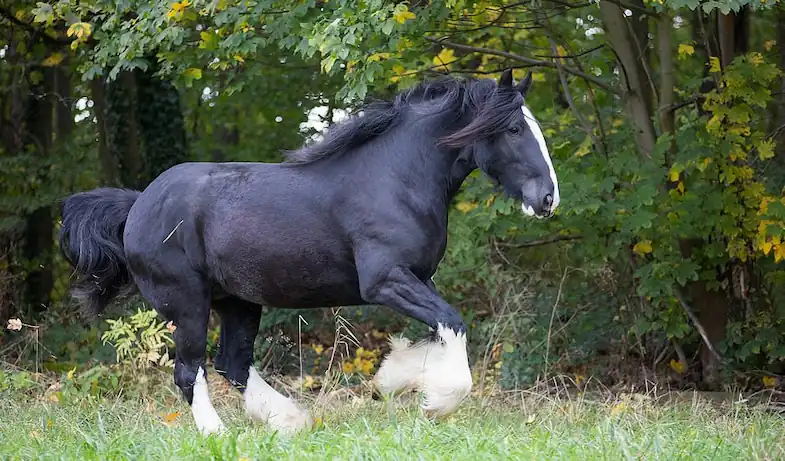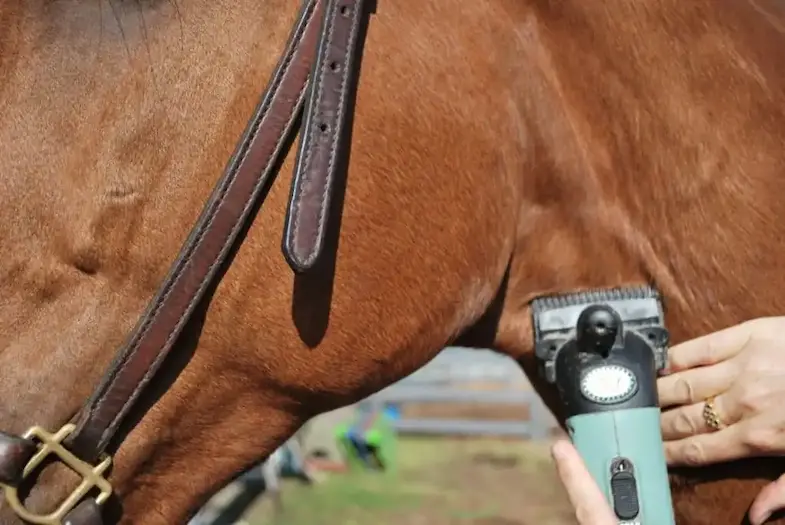As the nights get longer and the weather begins to turn colder many of us start to think about clipping our horses but is it always the best thing? Just because you did last year doesn’t mean that you should this year, after all, your horse may not have the same workload as he did the previous year. On top of that, the weather is constantly changing so clipping may not always be necessary.
Why do I need to clip my horse?
During the winter months, a horse’s coat often grows much thicker which helps them to stay warm and live outside comfortably without a rug, but this can be a problem if your horse is regularly worked throughout the winter which is the main reason why many owners clip their horses. Clipping them will prevent excessive sweating that can make it harder for a horse to cool down and therefore reduce their ability to regulate their temperature which in turn will increase their chances of catching a chill.
Clipping minimizes sweating by enabling your those to keep cooler, but it also allows any sweat to dry (or evaporate) much quicker. As an added bonus though, it will also make grooming easier and can, in some horses, encourage their summer coat to grow back glossier than before.
Some horses suffer from a condition called Equine Cushing’s Disease which, amongst other things, makes their coat grow much thick all year round. Horses with this condition are often clipped throughout the year.
The idea of clipping is to make your horse more comfortable but because clipping isn’t natural it’s important to make sure it’s being done for the right reasons and that you have your horse’s best interests at heart.
When should I clip my horse?
Depending on the amount of work you and your horse do you should clip your horse before the start of winter. A horse’s coat grows the quickest between the start of fall and mid-winter so during that period you should clip them every 3 to 5 weeks, at a minimum you should clip them three times throughout these months. Unless you’re clipping your horse all year round you shouldn’t clip him past the end of winter either.
The table below should help to give a guide as to when to clip your horse depending on which hemisphere you live in.
| Northern Hemisphere | Southern Hemisphere | |
| Grows the quickest | September – December | March – June |
| First clip | September or October | March or April |
| Second clip | October or November | April or May |
| Third clip | November or December | May or June |
| No later than | February | August |
Should I clip my horse in the winter?
Before deciding whether or not to clip your horse you need to consider where your horse is kept (whether he’s turned out or stabled), his workload, and the climate (and temperature) of where you live. If your horse is kept in at night, worked regularly and the temperature rarely drops below zero it’s advisable to clip your horse.
Some horses are prone to excessive sweating (even on a light workload) which, during the winter, gets trapped under their winter coat making it damp, this increases the time it takes for the horse to cool down and their coat to dry. In these cases, it’s better for their health and comfort to clip them.
Winter coats are designed to keep out the elements (such as the wind, rain, snow, and of course the cold) so if you do decide to clip your horse you’ll need to rug him before turning him out.
If, however, your horse is turned out during the winter and isn’t exercised much then there’s no need to clip him at all.
Do I need to clip my horse in the summer?
Most of us think of clipping as something that’s only done during the fall/winter but this isn’t always the case and there are a number of reasons for clipping a horse during the summer.
Thick coat
Some breeds, especially those native to harsh climates, have thick summer coats, and clipping those will not only make your horse more comfortable but will also make it easier and quicker to wash him and brush any sweat and dirt off.
Competition horse
Many performance horses, particularly show jumpers, eventers, and endurance horses, are clipped all year round to help increase performance and speed up their recovery after an event by allowing them to cool down quickly.
Heavy horse
Heavy horses often have their feathers clipped in the summer, in part to keep them cooler, but also because of mites that can burrow into the skin under the hair on their legs. These mites can cause a great deal of irritation and discomfort (including supersensitivity) but if their hair is shorter the mites can easily be removed before they start burrowing.
Whatever your reason for clipping in the summer its always advisable to use a medium (rather than fine) grade blade because the summer coat will be thinner (even on horses with a thicker summer coat) and cutting off too much will expose their skin and make them more susceptible to sunburn. It’s also a good idea to wash your horse before clipping to remove any knots, and afterward to get rid of any oil residue left by the clippers.
Should I clip a horse with Equine Cushing’s Disease?
Long, curly hair (known as hypertrichosis) is a symptom of Equine Cushing’s Disease, as is a delay in the winter coat being shed, both of which can make it difficult for a horse to regulate their temperature. This is why many owners of horses with Equine Cushing’s Disease choose to clip their horse all year round.
Depending on how thick your horse’s coat is you probably won’t need to give them a full or hunter clip, normally a blanket or chaser clip is enough.
What type of clip is right for my horse?
The type of clip you give your horse will largely be dependant on his workload, the table below will help you to decide which clip is the right one for your horse.
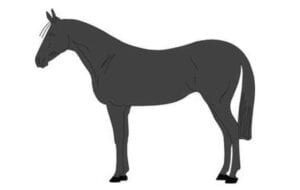
Full
As you can tell from the name, a full clip removes all of the horse’s hair. It leaves the horse with no natural protection so is only suitable for horses that aren’t turned out at all during the winter and are in hard competitive work.
Turnout: No
Workload: Heavy
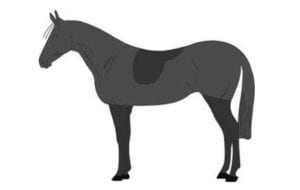
Hunter
While not quite as extreme as a full clip it should still only be considered for horses that aren’t turned out in the winter. It leaves the saddle area and the legs with hair so is suitable for horses on a slightly lighter workload. Some people will leave the head unclipped too.
Turnout: No
Workload: Medium to heavy
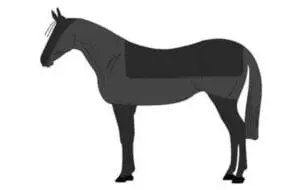
Blanket
Probably the most popular clip, it allows horses to be turned out during the day. Along with the blanket area that gives the clip its name many people also leave the head and legs unclipped too, although this is a personal choice.
Turnout: Yes, with rugs, during the day when the weather permits.
Workload: Medium
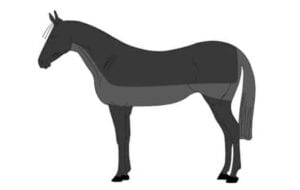
Tracer
Sometimes called a trace clip, it gives the horse more protection and warmth than other clips because only the lower neck and body are clipped. The legs and head aren’t clipped at all.
Turnout: Yes, with rugs during the day.
Workload: Light to medium
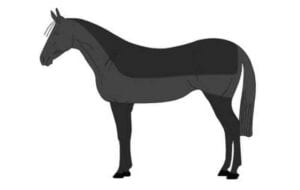
Chaser
A variation of the blanket clip, the chaser leaves the withers, and the top of the neck unclipped. This allows the muscles to keep warm and the air to get to areas that are more likely to sweat.
Turnout: Yes, with rugs during the day.
Workload: Medium
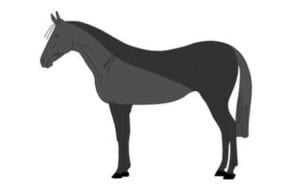
Irish
The Irish clip is one of the easiest and is ideal for horses that have never been clipped before or are nervous because it only removes the hair around the horse’s neck, armpits, and belly.
Turnout: Yes, with rugs during the day.
Workload: Light to medium
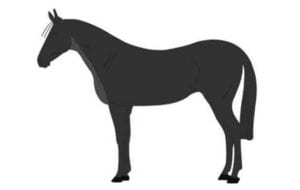
Bib
Also known as a strip clip, it’s perfect for horses in light work, only the hair from the throat to the chest is removed. Some people continue the clip through the forelegs to the belly, but this is often referred to as a belly clip.
Turnout: Yes, with rugs, day and night.
Workload: Light
Tips for clipping your horse
When clipping your horse it’s important to make sure the blades are tensioned correctly, this will minimize the heat but will also give your horse a smoother cut. Keeping the blades oiled (and re-oiling them every ten minutes) will also help to give a smooth clip, and will reduce tramlines.
If you only have one set of clippers then you should always use two sets of blades when clipping your horse, use one set for the body but change to a new set when it comes to sensitive areas such as the head and legs. You should also be careful when clipping the area the girth as this is also a very sensitive. If you ride with spurs then make sure you leave a small square where they touch your horse, this will give him a little bit more protection in that area.
Once you’ve finished clipping your horse you may find that there are a few hairs left, particularly around the ears and legs, but don’t worry you can either use a smaller set of clippers or a sharp pair of scissors to remove these.
During the winter you should wipe your horse down with a damp sponge after you’ve finished clipping him, this will remove any loose hairs as well as dust and oil left by the clippers. If you’re clipping your horse in the summer you can wash him after instead.
Further reading
- Do horses feel the cold?
- Beginner’s guide to horse care
- Do horses really need shoes?
- Dealing with mud fever in horses
- Where should I keep my horse at night?
- Riding safely in the snow
- Preparing for hurricane season
- Caring for older horses
- Protecting your horse from mozzies
- How to prevent sunburn in horses
I hope you found this article helpful. If you did I’d be grateful if you could share it please as it would really help me.
Recommended products
Over the years I have tried hundreds of different horsey products, from various blankets and halters to different treats. Some I’ve loved, others I’ve hated but I thought I’d share with you my top all-time favorite products, the ones I never leave the yard without. I’ve included links to the products (which are in no particular order) that I really think are great.
- Horse Knots by Reference Ready – If you’re like me and enjoy pocket reference guides then you’ll love this knot tying guide. These handy cards can easily fit in your pocket or attach to the saddle for quick reference. They’re waterproof, durable and are color coded to make them easy to follow.
- Mane ’n Tail Detangler – Even if you never show your horse you’ll need to detangle his tail from time to time (and possibly his mane too) which is always a challenging chore! I’ve found that if I run a little bit of detangler through my horse’s tails every few days it stops them from getting matted up and makes combing them easy, even if they’re coated in mud. I don’t know if I should admit to this or not but it also works wonders on my hair.
- TAKEKIT Pro clippers – Over the years I’ve tried a lot of different clippers and while some were obviously better than others I found these to be by far the best. They are heavier than a lot of other clippers but for me, that’s a good thing, it makes them feel more sturdy and hardwearing. On top of that they have a range of speeds so are just as good for clipping your horse’s back as they are his face. I also like the fact that they come in a handy carry case but that’s not for everybody. The company that makes them is super good and incredibly helpful too, a real bonus these days. The only thing I wasn’t keen on was the fact that it doesn’t come with any oil, but that’s not a major problem as it’s not difficult to buy lubricant.
- Shire’s ball feeder – There are so many boredom buster toys out there but I like to use these every day, regardless of whether or not my horses are bored. I find that it helps to encourage my horses to problem solve by rewarding them with treats (or pieces of fruit) but it also mimics their natural grazing behavior which helps to keep them calm and de-stressed.
- Horse safe mirror – This is a strange one that many people are surprised about but I like to put horse safe mirrors in the trailers as well as in the quarantine stalls. It helps to prevent the feeling of isolation by giving the impression of other horses being around. Being herd animals horses can get extremely stressed when they feel that they’re on their own but with these stick-on mirrors, they believe that at least one other horse is with them.
- Rectal thermometer – I know this isn’t glamourous at all but it’s vital for your horse’s well-being to be able to check their temperature and a rectal thermometer is the easiest way of doing this which is why I’ve added it to the list.
Shopping lists
I’ve also put together a few shopping lists of essential items that I’ve found helpful over the years. I’ve broken the lists down into different categories rather than put everything in one massive list 😉

